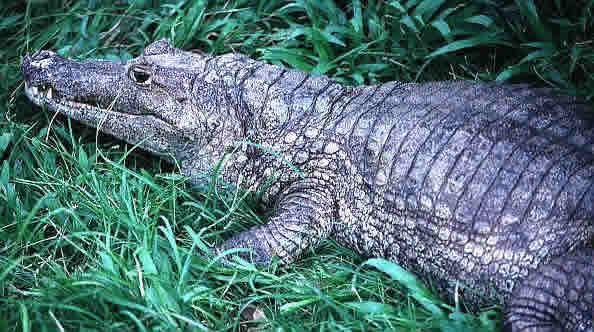
Caiman crocodilus apaporiensis
Caiman crocodilus apaporiensis NatureServe Explorer Species Reports — NatureServe Explorer is a source for authoritative conservation information on more than 50,000 plants, animals and ecological communtities of the U.S and Canada. NatureServe Explorer provides in-depth information on rare and endangered species, but includes common plants and animals too. NatureServe Explorer is a product of NatureServe in collaboration with the Natural Heritage Network. The believed-extinct Rio Apaporis caiman ( Caiman crocodilus apaporiensis) has been captured by Forrest Galante, wildlife biologist and host of Animal Planet’s EXTINCT OR ALIVE,
ITIS Reports — ITIS (the Integrated Taxonomic Information System) is a source for authoritative taxonomic information on plants, animals, fungi, and microbes of North America and the world.
FWS Digital Media Library — The U.S. Fish and Wildlife Service’s National Digital Library is a searchable collection of selected images, historical artifacts, audio clips, publications, and video. The spectacled caiman, also known as the white caiman, common caiman, and speckled caiman, is a crocodilian in the family Alligatoridae. It is brownish-, greenish-, or yellowish-gray colored and has a spectacle-like ridge between its eyes, which is where its common name come from. It grows to a length of 1.4–2.5 metres and a weight of 7–40 kilograms, with males being both longer and heavier than females. Its diet varies seasonally, commonly consisting of crabs, fish, mammals, and snails. Breeding occurs from May to August and 14–40 eggs are laid in July and August. This crocodilian has a large range and population; it is native to much of Latin America, and has been introduced to the United States, Cuba, and Puerto Rico.
| Status | Date Listed | Lead Region | Where Listed |
|---|---|---|---|
| Endangered | 06/14/1976 | Foreign (Headquarters) | Wherever found |
- Countries in which the the Apaporis River caiman, Wherever found is known to occur: Colombia
| 06/14/1976 | 41 FR 24062 24067 | Endangered Status for 159 Taxa of Animals; 41 FR 24062 24067 |
| 09/26/1975 | 40 FR 44392 44333 | CITES: Proposed Endangered Status for 216 Species on Convention Appendix I; 40 FR 44392 44333 |












